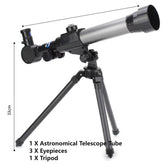Unveiling Our True Star's Unseen Power
We often gaze at the Moon, a luminous beacon reflecting light across our night sky, its familiar phases a comforting celestial clock. But in that very reflection lies the tale of its majestic parent, the Sun – a star so profoundly influential, so utterly powerful, that its intricate workings often go unnoticed amidst its consistent brilliance. Beyond the Moon's serene glow, lies the dynamic heart of our solar system, a fiery behemoth whose secrets are only just beginning to truly unravel.
Forget the simplistic image of a static yellow sphere. Our Sun is a living, breathing, roiling cauldron of plasma, a cosmic engine of nuclear fusion. At its core, temperatures reach an astounding 15 million degrees Celsius (), where hydrogen atoms are relentlessly crushed together to form helium, releasing an unimaginable torrent of energy. This energy, born from the raw power of Einstein's , then embarks on an arduous, hundred-thousand-year journey to the surface, finally escaping as light and heat.
What we perceive as constant sunshine is, in fact, a symphony of complex phenomena. The Sun's photosphere, its visible surface, is a churning landscape of granules – convection cells the size of Texas, constantly rising and falling, transporting heat. These granules surround darker, cooler sunspots, magnetic blemishes that betray the Sun's tempestuous inner workings. These sunspots are mere visible manifestations of the Sun's powerful, tangled magnetic field, which is generated by the movement of its conductive plasma, much like a planetary dynamo.
It's this dynamic magnetic field that drives the Sun's most spectacular and, at times, dangerous events. Solar flares, sudden bursts of radiation, erupt from the Sun's surface, hurtling X-rays and gamma rays into space. Even more dramatic are coronal mass ejections (CMEs), colossal eruptions of plasma and magnetic field that blast outward into the solar system at millions of miles per hour. When these charged particles interact with Earth's own magnetic field, they can create the breathtaking aurora borealis and australis. But they also pose risks: disrupting satellite communications, causing power grid failures, and endangering astronauts.
Understanding these solar phenomena is paramount. Every whisper and roar from the Sun directly impacts space weather, influencing everything from GPS accuracy to the health of our electrical infrastructure. Missions like the Parker Solar Probe are literally "touching the Sun," diving closer than any spacecraft before to unlock the mysteries of its corona and the solar wind, providing unprecedented data that promises to revolutionize our predictive capabilities.
So, while the Moon faithfully orbits, a quiet reflector of distant light, let's take a moment to truly appreciate the Sun. It is the architect of our days, the engine of our climate, and a star whose profound complexity continues to challenge and inspire. Its unseen power shapes not just our planet, but the very fabric of the heliosphere, a constant reminder of the universe's awe-inspiring forces at play, far beyond the familiar glow of our lunar companion.







































